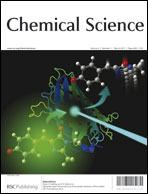Giant gemini surfactants based on polystyrene–hydrophilic polyhedral oligomeric silsesquioxane shape amphiphiles: sequential “click” chemistry and solution self-assembly†
Abstract
This paper reports our recent investigations in the synthesis, characterization, and solution


 Please wait while we load your content...
Please wait while we load your content...